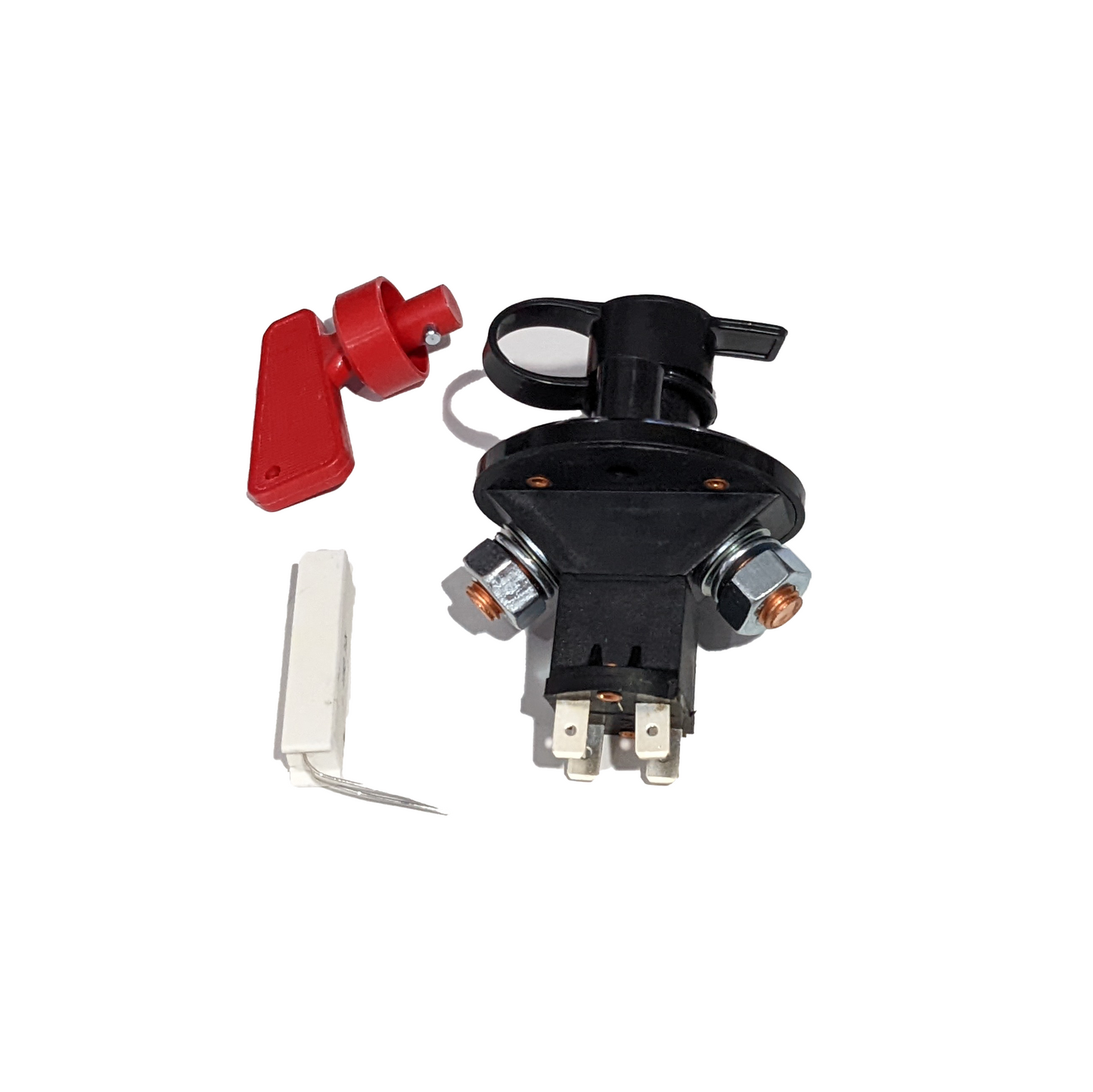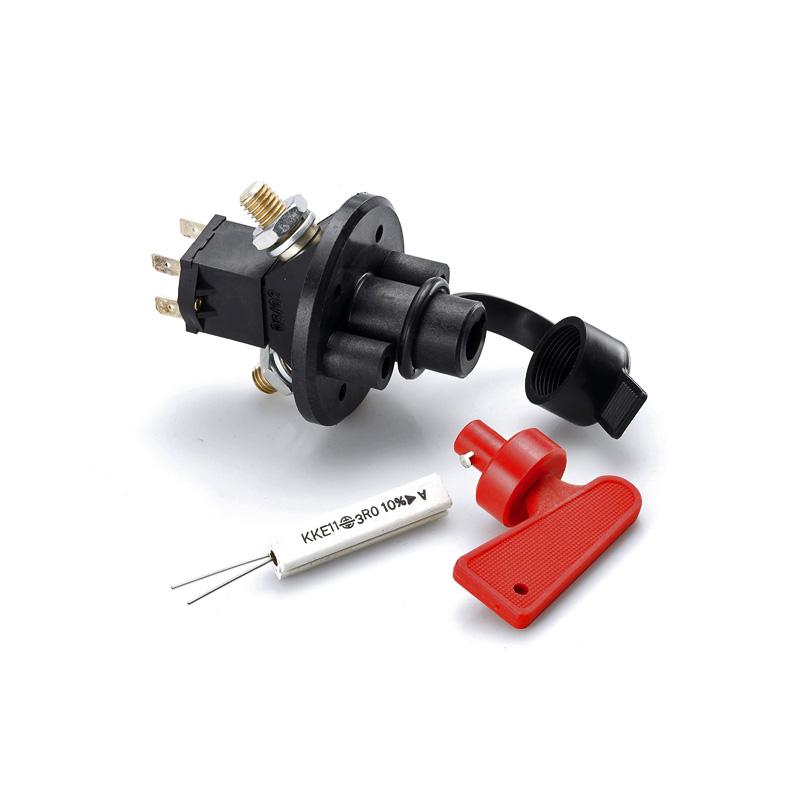6 Pole Battery Disconnect Kill Switch
6 Pole Battery Disconnect Kill Switch
Couldn't load pickup availability
6 Pole Battery Disconnect Kill Switch
Looking for a suitable race car kill switch? This universal 6-Pole battery cut-off switch offers 3 sets of contacts for vehicles with alternators. Primary contacts disconnect the battery, while the secondary contacts disable the ignition coil and short the alternator to ground. Includes a 3-ohm resistor (to help protect the alternator), weather-proof cover, and removable red key (remote cable compatible). Rated for 100 Amps of continuous duty, and 500 Amps peak.

How Does It Work?
Otherwise known as an "isolator", the battery disconnect switch isolates the battery from the rest of the electrical system, and ensures that the engine stops in the event of an emergency.
A properly installed battery disconnect kill switch will interrupt the current between the battery's terminal and the fuse box and alternator- forcing the current to go through the kill switch to make a connection.
Because the alternator can still keep spinning and powering the engine even when the battery is disconnected, it also will connect a wire that runs to the ECU(or ignition coil on carbureted cars), which kills power to the ECU and means the fuel pump and all other electrical components of the car are forced off when the switch is flicked.
Finally, there should be a grounding wire installed, which allows the alternator, which will still have inertia spinning it just after the engine is killed, to discharge any extra power it generates to ground instead of frying your electronics.
Install
Decide where the kill switch will be mounted, and cut the wire to the battery based on that plan. You'll be running new wire with appropriate gauge to where the cut is from the six pole battery disconnect switch.
You'll crimp connectors onto a total of four new wires, and put two on one pole for the alternator and fuse box relay, and another two battery wires on the other pole. You'll also need to run a jumper wire between the alternator/fuse box pole and one of the "1" poles below the switch.
Next, connect the other end of the alternator wire to your alternator, the fuse box wire to your fuse box wire, and your battery wires to your battery.
The next thing you'll need to do is run a wire to the ECU's main relay. Typically there will be a thin trigger wire that goes to the relay you can cut. You'll run each end to the battery disconnect switch's "2" poles- allowing it to complete it's circuit when in the on position, and cutting that connection when it turns off.
The last thing you'll need to do is ground the kill switch's final pole, the last "1" connector and mount it to your vehicle.




